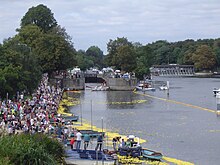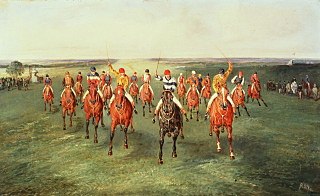
The 2000 Guineas Stakes is a Group 1 flat race in Great Britain open to three-year-old thoroughbred colts and fillies. It is run on the Rowley Mile at Newmarket over a distance of 1 mile and scheduled to take place each year at the start of May.
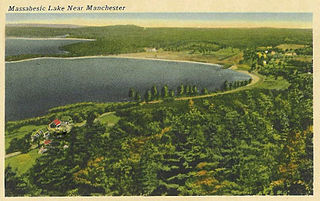
Auburn is a town in Rockingham County, New Hampshire, United States. The population was 5,946 at the 2020 census, up from 4,953 at the 2010 census.
The Spring Racing Carnival is the name of an Australian Thoroughbred horse racing series held annually in Melbourne during October and November.

A rubber duck or a rubber ducky is a toy shaped like a stylized duck, generally yellow with a flat base. It may be made of rubber or rubber-like material such as vinyl plastic. Rubber ducks were invented in the late 1800s when it became possible to more easily shape rubber, and are believed to improve developmental skills in children during water play.

The Capilano River flows from north to south through the Coast Mountains on Vancouver's North Shore between West Vancouver and North Vancouver and empties into Burrard Inlet, opposite Stanley Park. The river is one of three primary sources of drinking water for residents of Greater Vancouver, and flows through the Capilano watershed. The Cleveland Dam, built in 1954, impounds a reservoir for this purpose. The entire area of the reservoir and watershed area upstream of the dam is closed to the public to ensure the quality of the drinking water. Prior to construction of the Cleveland Dam, the Capilano River deposited large amounts of sediment into Burrard Inlet. A dredge was needed to remove this sediment build-up in order to keep Burrard Inlet open for ship traffic.

The Oregon Ducks are the intercollegiate athletic teams that represent the University of Oregon, located in Eugene. The Ducks compete at the National Collegiate Athletic Association (NCAA) Division I level as a member of the Pac-12 Conference. With eighteen varsity teams, Oregon is best known for its American football team and track and field program, which has helped Eugene gain a reputation as "Track Town, USA". Oregon's main rivalries are with the Oregon State Beavers and the Washington Huskies.
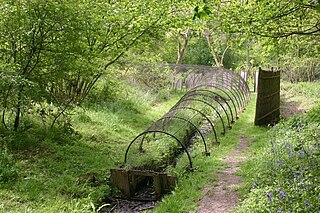
The Boarstall Duck Decoy is a 17th-century duck decoy located in Boarstall, Buckinghamshire, England, and now a National Trust property. The system took advantage of a two-acre lake with pipe-cage tunnels running out of it.

The blue-billed duck is a small Australian stiff-tailed duck, with both the male and female growing to a length of 40 cm (16 in). The male has a slate-blue bill which changes to bright-blue during the breeding season, hence the duck's common name. The male has deep chestnut plumage during breeding season, reverting to a dark grey. The female retains black plumage with brown tips all year round. The duck is endemic to Australia's temperate regions, inhabiting natural inland wetlands and also artificial wetlands, such as sewage ponds, in large numbers. It can be difficult to observe due to its cryptic nature during its breeding season through autumn and winter. The male duck exhibits a complex mating ritual. The blue-billed duck is omnivorous, with a preference for small aquatic invertebrates. BirdLife International has classified this species as Least concern. Major threats include drainage of deep permanent wetlands, or their degradation as a result of introduced fish, peripheral cattle grazing, salinization, and lowering of ground water.

Cambridge '99 Rowing Club, generally referred to as 'Nines', is based on Kimberley Road in the historic City of Cambridge, UK.

Friendly Floatees are plastic bath toys marketed by The First Years and made famous by the work of Curtis Ebbesmeyer, an oceanographer who models ocean currents on the basis of flotsam movements. Ebbesmeyer studied the movements of a consignment of 28,800 Friendly Floatees—yellow ducks, red beavers, blue turtles, and green frogs—that were washed into the Pacific Ocean in 1992. Some of the toys landed along Pacific Ocean shores, such as Hawaii. Others traveled over 27,000 kilometres (17,000 mi), floating over the site where the Titanic sank, and spent years frozen in Arctic ice before reaching the U.S. Eastern Seaboard as well as British and Irish shores, fifteen years later, in 2007.

Super Rub 'a' Dub is a downloadable game on the PlayStation Store for the PlayStation 3 video game console. It was announced on February 8, 2007 at the D.I.C.E. Summit, and released in North America on April 19, 2007 alongside a demo version.

Duck tours are tours that take place on purpose-built amphibious tour buses and (modified) surplus amphibious military vehicles, like DUKWs ("Ducks") and LARC-Vs. They are often offered as tourist attractions in harbor, river and lake cities.

The Magpie is a British breed of domestic duck. It has distinctive black and white markings reminiscent of the European magpie, and is a good layer of large eggs.
Formula One tyres play a significant role in the performance of a Formula One car. The tyres have undergone major changes throughout the history of Formula One with different manufacturers and specifications used in the sport.
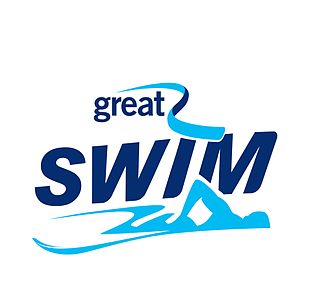
The Great Swim is a national open water swimming event in the United Kingdom, which has had over 22,000 participants. The event was started in 2008 with a one-mile Great North Swim in Windermere. Taking its inspiration from the world’s biggest half marathon the Great North Run, Great Swim uses the formula of mass participation events to provide a focus and a challenge for which the individual can train.
Rubber Duck is a series of several giant floating sculptures of yellow rubber ducks, designed by Dutch artist Florentijn Hofman, which have appeared in many cities around the world, including Hong Kong, Pittsburgh, Toronto, Kaohsiung, Baku, and Sydney. Each Rubber Duck is recreated anew locally, as his public art is intended to be temporary.
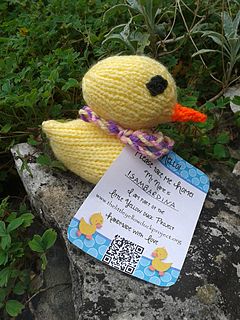
The Little Yellow Duck Project is a UK-based international project started in 2014 to raise consciousness of the need for organ, stem cell and blood donors and to encourage small random acts of kindness. Participants are invited to knit, crochet or otherwise create small yellow ducks and then leave them in public places to be found by strangers. Each duck has a tag introducing the project, often naming the duck, and encouraging the finder to log on to the project website. There they can record the finding of the duck and learn more about the need for organ, stem cell and blood donors and how to become one.
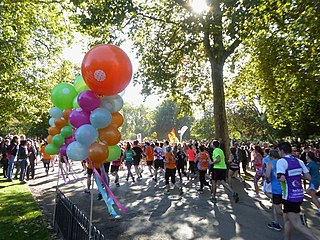
The Royal Parks Half Marathon, first held in 2008, takes place each October, starting and finishing in Hyde Park. It is the only half marathon that travels through central London and four of the Royal Parks and is one of London's largest half marathons, with over 16,000 participants.
